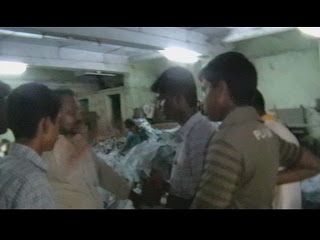We also got he possible disposal of leather goods into yhe environment and we made many experiments “Experience to date indicates that on the strength of these results we can feel justified in hoping to have found an environmentally acceptable disposal procedure for chrome-free shavings and leather. In principle, metal free shavings and leather have been found not to inhibit the biological process of composting and can be used as fertiliser. However, it must be borne in mind that leather is often produced with unknown chemicals, which may slow down the composting and fertilising behavior. For every type of leather trials should be carried out and be verified by drawing up integral environmental balance sheets.”
Information source:
Name:J.Kanagaraj, J.C.Velappan,
Address:central leather research institute, Adayar, chennai 600 020
We went to central leather research institute and got informations on danger of chrome-tanned solid waste
Although the leather industry is environmentally important as a user of by-products of the meat industry, it is perceived as a consumer of resources and producer of pollutants. By processing of one metric ton of raw hide we receive 200 kg of leather final product, 250 kg of non-tanned waste, 200 kg of tanned waste (3 kg of chromium) and 50 000 kg of waste water (5 kg of chromium). Only 20 % of the raw material weight is converted into leather [11]. The most serious problem, which is now of a great importance, is chrome-tanned solid waste. The simplest solution for this waste is its disposal in the open air. But such solution can be potentially dangerous, because uncontrolled processes in chrome waste deposited in that way could produce various soluble compounds. Chromium III (Cr III) and chromium VI (Cr VI) compounds are produced in large quantities and are accessible to most of the population. There is evidence that hexavalent chromium may be carcinogenic [12]. The National Institute for Occupation Safety and Health has classified the chromate and dichromate salts of calcium and magnesium (elements occurring in soil and drinking water) as carcinogenic compounds.

